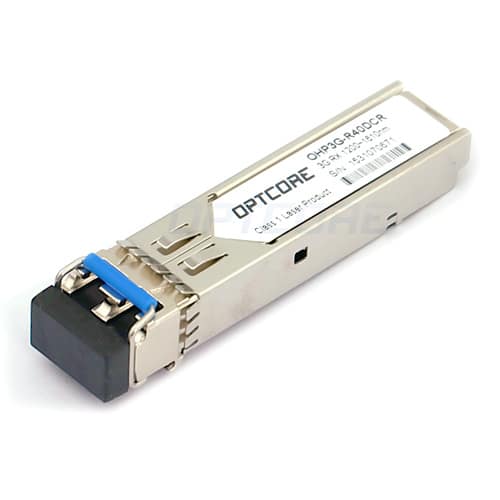
Do you know the difference between video optical transceivers and optical transceivers? Today, Xiaobian introduces their specific differences from the following aspects. First, we must talk about the difference between video optical transceivers and optical transceivers from their concept.
The following are the differences between video optical transceivers and fiber optic transceivers:
1. The optical transceiver is mainly applied to the network, one end is connected to the optical fiber, and the other end is connected to the switch, mainly a network signal.
The optical transceiver can transmit video signals, 485 control signals, network signals, alarm signals, audio signals, switching quantities, and the like. The optical transceiver on the monitoring is generally: one end of the optical transmitter is connected to the camera, the other end is connected to the optical fiber, one end of the optical receiver is connected to the optical fiber, and the other end is connected to the display device.
2. The first talk about the optical transceiver, there are two conventional optical transceivers.
a. PDH optical transceiver for transmitting data signals.
b. The video optical transceiver is used to transmit video surveillance signals. The optical transceiver is a receiver (receiver and transmitter), that is, the main function of the video receiver is to convert the optical signal into an electrical signal (D/A). The main function of the transmitter, that is, the video transmitter, is to convert the electrical signal into an optical signal (A/D).
Fiber Transceiver
Earlier, the optical transceiver was used to transmit video signals. Then the fiber optic transceiver is used to transmit Ethernet signals. Although they are all photoelectric conversion, the protocols and principles of the electrical signals are different, and the signals transmitted on the optical path are also different.
3. One end of the optical transceiver is connected to the optical transmission system, and the other end (user end) comes out with a 10/100M Ethernet interface. Optical fiber transceivers are all used to achieve photoelectric signal conversion. The main principle of fiber optic transceivers is that fiber optic transceivers implemented by optocoupler usually have the following basic features.
a. Provide ultra-low latency data transmission.
b. Fully transparent to network protocols.
c. Use a dedicated ASIC chip to achieve data line-speed forwarding. The programmable ASIC combines multiple functions onto a single chip, which has the advantages of simple design, high reliability, and low power consumption, which enables the device to achieve higher performance and lower cost.
d. The equipment adopts 1+1 power supply design, supports ultra-wide power supply voltage, realizes power protection and automatic switching.
e. Support an ultra-wide operating temperature range.
f. Support full transmission distance (0 ~ 120 km)
The optical transceiver is a device that converts multiple E1 (a data transmission standard of a trunk line, usually at a rate of 2.048 Mbps, which is adopted in China and Europe) into an optical signal and transmits it. The price of the optical transceiver is different depending on the number of E1 ports transmitted. Generally, the smallest optical transceiver can transmit 4 E1s, and the largest optical transceiver can transmit 4032 E1s.
Optical transceivers are divided into three categories: PDH, SPDH, SDH.
PDH (Plesiochronous Digital Hierarchy) optical transceivers are small-capacity optical transceivers, which are generally used in pairs, also called point-to-point applications. The capacity is generally 4E1, 8E1, and 16E1.
The SDH (Synchronous Digital Hierarchy) optical transceiver has a large capacity, generally 16E1 to 4032E1.
SPDH (Synchronous Plesiochronous Digital Hierarchy) optical transceiver, between PDH and SDH. SPDH is a PDH transmission system with SDH (Synchronous Digital Series) features (based on the principle of code rate adjustment of PDH, and at the same time adopts some networking technologies in SDH).
Original Article Source http://bbs.elecfans.com/jishu_1142152_1_1.html